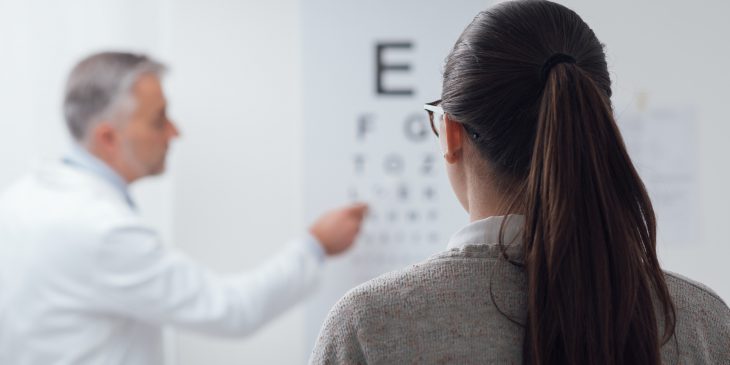Nearly 40 patients with a genetic disease that rapidly blinds young adults were successfully treated with gene therapy, according to a paper published today in Science Translational Medicine. The study was conducted by an international team coordinated by Dr. José-Alain Sahel from the University of Pittsburgh and Institut de la Vision, Paris, and Dr. Patrick Yu-Wai-Man from the University of Cambridge.

Dr. José-Alain Sahel
Surprisingly, scientists found that injecting a gene therapy vector into one eye of someone suffering from Leber hereditary optic neuropathy (LHON) — the most common cause of blindness caused by dysfunctional mitochondria in cells of the retina — significantly improved vision in both eyes.
LHON is a rapidly progressing genetic disease that causes optic nerve damage and develops in early adulthood. Within a few weeks of disease onset, the vision of most people affected deteriorates to the point where they are considered legally blind.
“As someone who treats these young patients, I get very frustrated about the lack of effective therapies,” said Sahel, senior investigator of the study and professor and chair of the Department of Ophthalmology at Pitt School of Medicine, as well as director of the UPMC Eye Center. “These patients rapidly lose vision in the course of a few weeks to a couple of months. Our study provides a big hope for treating this blinding disease in young adults.”
In their effort to correct a genetic error in the mitochondrial DNA – a mutation in the gene called MT-ND4 – researchers injected an artificial virus containing a template for the correct copy of the gene into the eyes of 37 patients.
“We expected vision to improve only in the eyes treated with the gene therapy vector,” said international coordinating investigator and neuro-ophthalmologist Yu-Wai-Man, from Cambridge’s Department of Clinical Neurosciences. “Rather unexpectedly, both eyes improved for 78% of patients in the trial following the same trajectory over two years of follow-up.”
On average, the best possible vision in treated and untreated eyes improved by three lines of vision — 15 and 13 letters on the worldwide standard eye testing chart, respectively. In some patients, the effect was even larger, reaching 28.5 letters for the treated eyes and 24.5 letters for untreated eyes.
To better understand the mechanism by which the treatment of one eye could improve the other, the researchers conducted a study in long-tailed macaques. Macaques have a visual system similar to that of humans, which allows scientists to study the distribution and effects of the gene therapy vector in much greater detail.
The animal study suggested that the gene therapy can reach an untreated eye by passive diffusion — traces of the viral vector’s genetic material were detected in the back of the untreated eye, including retina and optic nerve.
“Our approach isn’t just limited to vision restoration,” said Sahel. “Other mitochondrial diseases could be treated using the same technology.”
The technology, called mitochondrial targeting, was developed by the Institut de la Vision in Paris and licensed to GenSight Biologics, a biotech company co-founded by Sahel. The company is seeking marketing authorization from the European Medicines Agency to use its technology as treatment for patients with visual loss due to LHON caused by a confirmed mutation in the ND4 mitochondrial gene.








